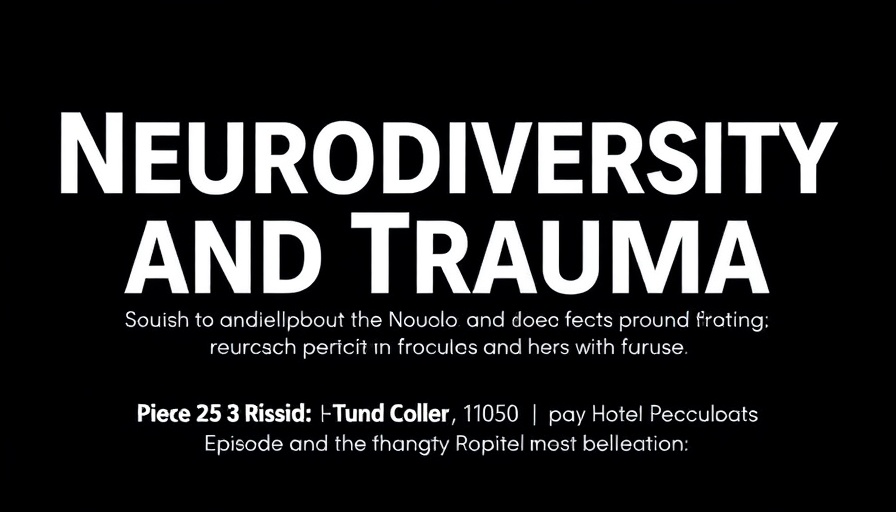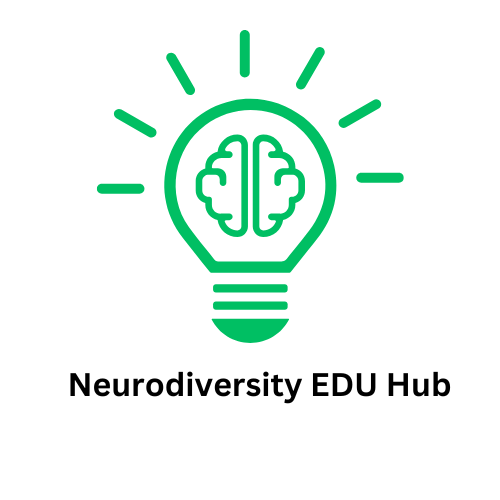
Understanding the Interplay Between Neurodiversity and Trauma
In recent discussions surrounding mental health, the intersection of neurodiversity and trauma has emerged as a crucial area of focus, particularly in understanding how diverse neurological conditions affect an individual’s response to traumatic experiences. As Megan MacKay elucidates in her conversation on Neurodiversity and Trauma, it is essential to recognize that individuals with conditions such as ADHD and autism often face unique challenges, which can exacerbate the effects of trauma. From the outset, those who diverge from neurotypical patterns may find themselves in environments ill-equipped to support their learning and emotional needs, leading to a compounded experience of shame and distress.
In Neurodiversity and Trauma, with Megan MacKay, the conversation delves into the unique experiences of neurodivergent individuals facing trauma, prompting a deeper exploration of how these insights shape our understanding.
The Distinction Between PTSD and Complex PTSD (C-PTSD)
A significant aspect discussed in the video is the distinction between post-traumatic stress disorder (PTSD) and complex PTSD (C-PTSD). PTSD typically arises from a single traumatic event, resulting in flashbacks, severe anxiety, and uncontrollable thoughts about the incident. On the other hand, C-PTSD encompasses the effects of prolonged exposure to distressing situations, often from multiple adverse experiences over a lifetime. Individuals with neurodivergent conditions, who might have faced continuous bullying or systemic misunderstandings within educational frameworks, may develop C-PTSD due to these cumulative experiences. Understanding this difference is pivotal in tailoring therapeutic approaches for those within the neurodiverse community.
Communicative Actions: Addressing the Needs of Neurodivergent Individuals
Megan advocates for addressing the communication needs of those affected by trauma, emphasizing that it’s crucial for therapists and support systems to first understand the individual’s unique experiences before implementing treatment. This entails creating safe environments where neurodivergent individuals feel acknowledged and understood. The act of validating feelings—acknowledging them as real despite being inherently subjective—plays a vital role in effective therapeutic practices. Therapists trained in approaches such as EMDR and somatic experiencing can guide patients through their traumatic memories, fostering healing by breaking the cycles of trauma that can lead to overwhelming distress.
Preventative Strategies for First Responders
A key takeaway from the discussion is the need for proactive strategies among first responders who frequently encounter trauma. This workforce—comprising police officers, firefighters, medical personnel, and other emergency providers—often experiences significant occupational stress due to the nature of their jobs. Megan notes the importance of developing a support system where they can openly address their emotional responses without fear of stigma. Establishing trusted networks where these individuals can discuss their experiences is essential for fostering resilience and mitigating the risk of PTSD.
The Importance of Understanding Trauma's Impact on Neurodiversity
The connection between trauma and neurodiversity is particularly significant. As Megan points out, those with neurodivergent traits often navigate a world structured around neurotypical standards, which can lead to feelings of isolation and rejection. This loneliness can exacerbate difficulties in forming relationships, further perpetuating cycles of trauma-related stress. By acknowledging and validating these experiences, mental health professionals can better engage with neurodiverse individuals, promoting healing and understanding.
Empowering Neurodivergent Voices
An equally vital component in the conversation pertains to empowerment. Individuals with neurodivergent experiences must have platforms where their narratives can be heard and validated. Just as Megan shares her journey and her commitment to creating inclusive dialogue through her radio show, others must be encouraged to share their stories, thereby strengthening community ties and fostering an environment of support. Such empowerment not only validates their experiences but also paves the way for societal shifts in understanding neurodiversity and trauma.
Ultimately, the discussion surrounding neurodiversity and trauma, as explored in the video Neurodiversity and Trauma, highlights the critical need for compassionate, comprehensive approaches that address the unique challenges faced by neurodivergent individuals. With continued education and advocacy, we can create environments conducive to healing and resilience for all.
 Add Row
Add Row  Add
Add 




Write A Comment